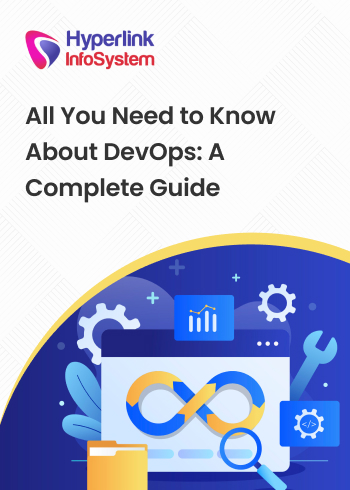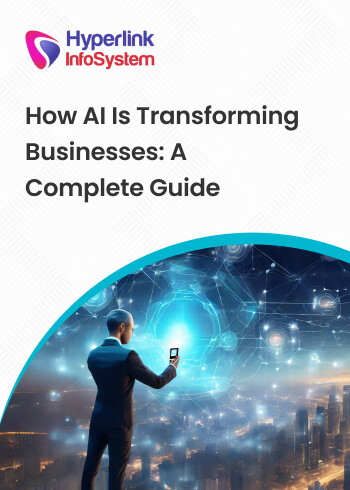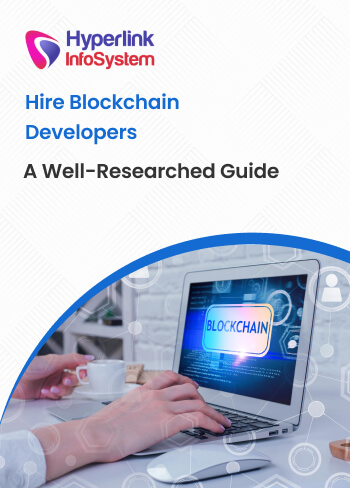The COVID-19 crisis has disrupted everyday life across the world. Starting from a few hundred cases, the
number of infected people has surpassed 10 million, and it continues to grow each day.Since the pandemic began, countries have endured through several problems ranging from food scarcity, mass quarantines, broken supply chains, and overwhelmed healthcare systems.
Similar to previous pandemics, the Novel Coronavirus has shown us the fragility of humans against nature, as well as the downsides of an interconnected world. That said, technology has played a key role in helping us fight through the pandemic and control the spread of the virus to some degree.
During the last SARS outbreak in 2002, scientists had to research for more than a year to identify the virus’s genome. Now, thanks to technological advancements, they were able to decode the Coronavirus genome in less than a month.
Countries have used digital technology to accelerate, complement, and optimize health care services. At the same time, it has help nations across the globeadopt new behaviors, increase utilization of resources, and enhance pharma engagement&production.
In our Pharma and Healthcare Technology report, we will discuss various ways technology has impacted our response to Covid-19 in 2020.
The Role of Digital Solutions in the Immediate Outbreak Response
Digital solutions were among the early health measures that kept the outbreak at a manageable scale. Officials in China, South Korea, and other countries leveraged contact tracing, testing, and surveillance augmented them with data-driven technologiesto curb the spread of the virus.
One example of this was an applicationcreated by an independent Chinese developer. It allowed people to trace whether they were on the same flight, train,or nearpatients confirmed with the virus.
Although this app initially relied on information collected from social media and websites to identify confirmed cases, it later started aggregating data from national transportation authorities and all-level public surveillance systems.
By equipping the public with such a risk assessment tool, the Chinese government helped their citizens stay better informed of their exposure level.Because of this, just three weeks after the first lockdown of Wuhan, the platform reported more than 140 million searches, helping as many as 80,000 people learn that they had traveled with confirmed cases.
Likewise, another notable application helped facilitated health workers to enhance diagnostic accuracy. By doing so, it improved the effectiveness of the diagnostics and made it available to a larger group of users. As experts developed AI-powered CT imaging interpretation tools, it helped health workers
reduce the CT reading time from hours to seconds.
At the same time, patients stuck at community clinics
used remote tools to get their CT scan read by expertsmiles away. This solution helped authorities implement social distancing measures at the worst phases of the outbreak, keep track of infected people, and enhance the diagnostic capacity without burdening healthworkers.
Even as social distancing measures and the lockdown lifted, digital technology played its roles in keeping things under control. Mid-February, Zhejiang launched an application that helped people determine their likelihood of being infected by Covid-19 in the form traffic-light styled “Health Codes”.
The colors red, amber, and green showed people their health status based on their symptoms, self-reported body temperature, and extracted contact history. The application proved to be crucial for resuming social and economic activities, as it helped authorities screen migrant workers during interprovincial travel.
Ultimately, as many as 900 million people were registered to the app, which almost two-thirds of China’s entire population.At the same time, it provided the authorities with a live dataset, which they can use to implement continuous local risk assessment, contact tracing, and disease surveillance. In the future, the same data help authorities better understand transmission patterns.
During the outbreak, digital solutions continued to help health officials provide treatment to their patients. People suffering from various conditions, including mental health issues benefitted from telemedicine. Many online platforms also made efforts to roll out systematic and accessible, mental health support measures not only for healthcare workers but also for the general public.
The digital health market has been increasing at an incredible pace since the onset of 2019. Research has shown us that there has been a 28.5% growth from last year. The digital health market value started from $106 billion a year and we can expect it to
increase to more than $639 per year till 2026.
In this unprecedented growth, the healthcare apps segment will be the biggest contributor, accounting for 38.9% of its entire market value. At the same time, the Telehealth segment is expected to increase, as more physicians will avail this option to minimize physical contact with patients wherever they can.
(Global digital health market will increase 6 times its 2019 market value in the upcoming seven years.[
Image Source])
World-Wide Technology-Driven Initiatives Against COVID-19
The use of technology against Covid-19 wasn’t limited to China but was a strategy used all across the world. The following are some of the key initiatives adopted by othercountries to stem with the rising tide of infected cases.
Planning and Tracking
Artificial intelligence (AI) and big data have played a central role in ramping up COVID-19 preparedness and improving the tracking of people and curbing the virus’ spread.Applications such as migration maps have enabled the authorities to track infected peopleand trace their movement effectively.
As soon as China announced the SARS-CoV-2outbreak, Taiwan began conducting health checks for airline passengers coming from China. To make their system more accurate, they integrated centralized national health insurance database data with the immigration records and continued monitoring it as new data came.
In Sweden, authorities created a health-care workers platform where they could report real-time data related to staffing, ventilator usage, personal protective equipment, the number of patients with COVID-19,and other useful information.
The data was then shared across the country with health-care authorities. Experts used this data to monitor the condition of healthcare facilities, allocate resources efficiently, and enhance hospital bed capacity.
At the same time, Covid-19 fueled the usage of data-driven dashboards in Singapore, as well. Authorities used it to estimate the disease burden. Applications such as UpCodeleveraged the data and guided the Singapore Ministry of Health to
estimateinfection trends across various demographics, age groups, regions, and gender. It also enabled them to plot the recovery time for infected patients.
AI algorithms developed by experts incorporated the effect of climate factors in their training models, which then helped them make more accurate predictions.
Despite the role of AI in controlling the spread of the disease, these systems are not without limitations. AI relies on the COVID-19 datasets to forecast the trajectory of the infection. However, many of these models rely on early datasets provided by infected countries. Since the strains of the virus are not the same in every country, it affects the accuracy of these models.
Furthermore, in the absence of reliable historical data, other data features like social media and online traffic data have
created unnecessary noise in big-data sets. This has created“overfit models”, which are models that are only accurate for a specific set of scenarios, making it difficult for governments to tackle local transmissions effectively.
To make accuratetrends and predictions, we must filter this noise. Lastly, we should also assess the accuracy, validity, and reliability of machine learning before interpreting projections.
Screening For Infection
As discussed before, China has used free, web-based, and cloud-based tools to screen infected cases within its populationand guide patients to appropriate resources. However, other countries have used similar techniques for screening infected people.
Taiwan uses high-performance infrared thermal cameras at itsairports to monitor thermal imagery in real-time and identifying people suffering from a fever.
Iceland adopted a different approach to screen infected cases and started widespread testing of asymptomatic cases. With the help of mobile technology, authorities in Iceland gathered data on patient-reported symptoms. Later, they combinedit with datasets related to clinical and genomic sequencing. This helped them better understand the pathology of the virus as well as its spread.
Their unique approach to screening gave insights to the rest world regarding the proportion of asymptomatic cases and their role in the transmission of COVID-19. It also helped Iceland maintain one of the highest per-capita testing rates.
Meanwhile, countries like Germany and South Koreahave relied on extensive testing to screen infected cases. However, because they implemented these measures in the early stages and isolated infected cases, they managed to limit the total number of cases within their country.
Since widespread and systematic screening requires trained personnel and expensive technologies, it’s difficult for economically challenged countries to implement these measures.
At the same time, the incubation period of the virus and the increased proportion of asymptomatic infectionsaffect how well digital systems screen vital signs or self-reported symptoms. Research suggests that the majority of these cases cannot be detected because of these factors.
Contact Tracing
One of the reasons countries like South Korea,and Germany have succeeded in limiting the number of infected cases is that they used contact tracingaggressively in the early stage of the spread.
Authorities gathered data on facial recognition technology, credit/debit card records, security camera footage, and GPS with the help of mobile phones and vehicles. Doing so gave them detailed timelines of people's travel and real-time data on the virus’ spread.
South Korean authorities also established emergency text alerts regarding new COVID-19 cases in particular regions. At the same time, they identified individuals who could’ve been in contact with infected people, helping them isolate possibly infected cases from the rest of the population.As data has shown, these initiatives helped South Korea maintain
one of the lowest per-capita mortality rates in the world, despite being a densely populated country.
Singapore was also one of the few countries in the world that dealt with the Covid-19 threat with the help of technology. They launched a mobile application that alerts people when they are too close to each other using short-distance Bluetooth signals.
Whenever a person comes too close to people, the application records that event in their respective phones for 21 days. Therefore, if either of the people is diagnosed with Covid-19, then the authorities can alert people who have met infected people in the last 21 days. Similarly, Singaporean authorities can identify contacts of the infected person, as well.
Germany too, launched smartwatch applicationsto gather health data more effectively from their population. The applications recorded temperature, sleep patterns,pulsedata,and used this data to highlight signs of a viral illness.
Data gathered from those applicationsgave users an online, interactive map where authorities could assess the possibilities of COVID-19. Germany was able to maintain a low per-capita mortality rate despite having a large population and a huge number of cases. This happened primarily
due to digital health interventions and widespread testing.
However, just like AI, contact tracing initiatives also had their limitations and pitfalls. Not every exposed patient required quarantine.The likelihood of infections is less when people are wearing personal protective equipment. Also, people can come into proximity with otherpeople even when they are separated by thin walls, something that mobile phone signals can penetrate.
At the same time, many people don’t carry mobile phones or don’t have adequate mobile service in their region. Because of these factors, the authorities could miss relevant exposure, which can leave the disease unchecked in certain places. Lastly, research by Oxford Universityestimated that 60% of a country's population needs to use contact tracing apps to make these initiatives effective.
Quarantine and Self-Isolation
Widespread lockdowns and quarantine measures have had severe socioeconomic consequences in several countries. Although these measures are necessary for infection control, they also put a strain on the economy.
With digital technology, authorities can limit social restrictions only to people who are exposed to or infected with the virus. This helps them minimize restrictions on other citizens, making way for socio-economic activities.
In China, the health monitoring system used a quick response (QR) code system to serve as health status certificates and travel passes for citizens. First, people record their temperature and then they submita symptom survey to the authorities.
Based on the symptoms and health readings, the authorities issuedtraffic color-coded certificates and travel passesEach color showed the level of Covid-risk each person had.People flagged with red color passes had to self-isolate for 14 days, whereas people with green passes could travel unrestricted.
China was also using a combination of portable digital recorders,drone-borne cameras, and AI-powered surveillance camerasto monitor and restrict how people gathered in public. Thesemeasures have helped China resume socio-economic activities while the rest of the world was bearing the brunt of the virus.
Meanwhile, Australia quarantined international travelers in hotels as they arrived, whereas travelers coming from Wuhan, were asked to quarantine off mainland Australia. They also issued new legislation where people breaching quarantine measures were ordered to wear tracking devices and could also be penalized with fines if they continued to breach restrictions.
Taiwan, too used electronic monitoring for home-quarantined people by giving them government-issued mobile phones and then tracking by GPS. If a person breached these restrictions, digital fence triggers would levy fines on those people.
South Korea also relied on digital technology to keep track of people in isolation. People in quarantine were required to download a mobile app that could alert the authorities if they left isolation.
Similar GPS-powered initiatives were seen in Iceland and Hong Kong. The Hong Kong authorities made it essential for people to wear a wristband linked to cloud technology that alerted authorities if the person breached the quarantine. On the other hand, Iceland followed South Korea’s example and used a mobile app to monitor people staying in quarantine.
Similarly, self-reported surveys and measures that use QR code systems are only 100% accurate when people are symptomatic and can tell their symptoms accurately. That said, these solutions still play a crucial role in limiting the spread to some degree if no eliminate it.
Clinical Management
Artificial Intelligence has helped in risk prediction and rapid diagnosis of COVID-19. China used a cloud-based AI-assisted CT service to diagnose cases with symptoms of pneumonia.COVID-Net, another AI-driven initiative created an open-source deep convolutional neural network design that could help clinicians across the world in identifying COVID-19 symptoms in chest x-rays.
At the same time, machine learning algorithms created by Chinese experts could accurately predict the likelihood of developing critical illnesses such as acute respiratory distress syndrome in people confirmed with COVID-19.
Similarly, prediction models guided resource allocation andclinical decision-making. With these solutions, hospitals and regions in need of critical care resources and medical supplies could be identified easily.
Virtual care platforms provided features such as digital monitoring and video conferencing. These platforms served as a means to deliver remote health care to patients and limit their exposure to Covid-19 as they would no longer need to go to health-care institutions.
At the same time, countries like Australia and the US too utilized digital technology to give remote care to patients who had chronic conditions or suffered frommoderate or mild COVID-19 symptoms.
Covid-19 initiated a trend of virtual care that wasn’t present before. If this system is implemented and delivered with the right measures, it can improve the accessibility of health-care services even after the pandemic is over. However, people using these systems must create measures to minimize possible risks such as costs to the health-care system, equipment malfunction, privacy breaches, and misdiagnoses.
The State of Pharma During The COVID-19 Crisis
In the middle of a global pandemic pharma operations have to deal with several challenges.They must ramp up production for drugs related to symptom-based treatment although supply chains have been stretched thin.
At the same time, they have to increase research and development rapidly for vaccines against the virus.The entire world population hopes that pharma companies would be able to develop a cure quickly.
Currently,over 110 vaccinesare being researched against COVID-19 with more than three dozen vaccines being under development. Most people expect that a vaccine could be delivered by early 2021.
However, in this scenario pharma companies have to rely heavily on technology. Without the technologies available today, developing a new drug took as much as 10 to 15 years.Technology has enabled the pharma industry to accelerate development and shortenthe time-to-market significantly.
To fight against Covid-19, pharma companies must increase collaboration in R&D and forego rivalries to produce an effective drug quickly and at the required scale. Collaboration with one another and smart technology solutions are the two strongest pillars that can help the pharma industry to quickly fulfill the global demand for a vaccine.
(Mckinsey & Company has identified the seven key initiatives that could help pharma operations cope with Covd-19 more effectively.[Image Source])
The Decline in Patient-Physicians Interactions
Data reveals that the growth in remote engagement in both healthcare and pharma is not making up for the loss of in-person HCP–patient interactions. Research shows that on average, 45% of health professionals cancel in weekly patient consultations compared to what they did pre-crisis. Interestingly, this happens despite the rise in remote consultations.
(The decline in physician-patient interactions has been more prevalent in new patients compared to existing ones. [
Image Source])
Rising Use of Telemedicine and Remote Tools
Physicians from various regions are using are now relying on telemedicine and remotetools for administrative needs, patient care, and awareness &education.Although the rate at which people have adopted telemedicine and other remote services has been fast and clinicians believe that this trend will endure, survey data revealed disagree that it will become the norm post-crisis.
(In-person consultations remained at their lowest during the peak of the crisis. [
Image Source])
Significantly Declining Pharma Interactions
As everyone is subject to social distancing measures, the majority of pharma companies have limited their in-person interactions partially or completely with health professionals. Because of this, surveyed healthcare professionals report that the frequency of interactions with pharma reps has decreasedmore intensely than their interaction with patients.
Despite factoring in remote interactions, their frequency of interactions has fallen by 65%,on average. Although the story is different in the United States, where remote interactions with pharma have increased two-folds, it doesn’t make an impact on the significant decrease in pharma-HCP interactions.
(Physician sentiment on addressing the immediate crisis appears to be part of the reason. [
Image Source])
How Technology Is Helping the Pharma Industry in 2020
Similar to health services, technology is making a significant impact on Pharma, as well. Here are some of the main ways digital solutions are helping in the fight against Covid-19.
Artificial Intelligence Redefining the Pharma industry
In the drug development industry, there are several labor-intensive processes. These factors reduce the efficiency production processes and productivity of the workforce, something that the industry cannot afford in these times.
AI-driven solutions are now taking over the labor-intensive and time-consuming processes in a bid to expedite the drug development journey. These solutions can help pharmacompanies to cut down the time needed to introduce a new drug to the market.
Deep learning and machine learning algorithms help experts conduct a thorough analysis of large datasets, giving them a comprehensive overview of the current scientific literature. As a result, these technologies can accelerate R&D activities significantly.
Pharma companies can now complete time-consuming processes such as discovery & validation of target-based drugs and design &identification of new moleculesin less time. Therefore, AI-based pharma software also minimizes the time taken during trials, approvals, and release of drugs.
At the same time, AI is also improving production processes. By incorporating intelligent solutions and software systems in quality control, predictive maintenance, design, waste reduction, and reusability, it is optimizing internal processes in Pharma.As a result, pharma companies are producing faster production and efficient outcomes, while reducing errors.
As pharma companies invest their time and efforts in the development of an anti-COVID-19 vaccine, machine learning, and artificial intelligence can help these solutions sift through, analyze, and offer key insightsusing the vast amount of data available on the different strains of the novel coronavirus. In doing so, pharma companies can create the best potential treatment for the disease.
Smart Automation Enabling Remote R&D
The risk of contracting infections is the same as the people working in the pharma industry as for other people. Since the coronavirus outbreak, most pharma companies have shifted to a remote working mechanism, mobilizing their employees remotely.
In such situations, companies cannot work well without automation and continue essential processes unobstructed. Automation is helping companies in drug discovery and improving processes by increasing reliability and reducing manual errors. At the same time, it also improves joins throughput and improves the ability to reproducedrugs.
Automation, combined with intelligent digital solutions, can assist pharma companies in carrying out end-to-end multi-step chemical synthesis of drugs. As it makes up for the absence of a manual workforce, it can improve the production ability of pharma companies significantly.
Automation and AI can indeedprovide companies with a wide range of benefits to pharma companies. However, trained scientists and experts are still neededdue to their analytical skills and expertise.
As the pharma industry continues to expedite COVID-19 vaccine development and scale vaccine production until they discover a viable drug, they must use a combination of expert scientists,AI, and automation.
Utilizing Big Data
Although developing a cure for Covid-19 is currently a priority for most pharma companies, creating drugs for other diseases is also necessary. To make their processes more efficient pharma companies are utilizing big data to expedite the production of drugs and improve their effectiveness.
As a growing number of data comes in the form of electronic medical records (EMR), pharma companies can tap into financial data, genetic and genomic data; as well as patient-reported data after ingesting medicines.
By analyzing such data, pharma companies can deliver gain greater insight into therapies that give the highest overall value to patients, while also reducing the cost to healthcare systems.At the same time, this information can be especially crucial for reforming accountable care organizations (ACOs).
With these insights, ACOs encourage can reimburse healthcare providers based on quality outcomes and measures; thereby,improving patient outcomes. Over the long term, data related to e-prescriptions and EMRs can help pharma, insurance, and health services to track patientsmore effectively.
However, pharmacompanies must collaborate with other stakeholders and continually improve drug development by using this targeted data. With these insights, they can also make sure that theyprovide compelling evidence of drug benefits and meet the needs of insurers, at the same time.
Industrialized Data Services
To make most of the available data, pharma companies need to get their hands on this data in the first place. Data services allow pharma companies, as well as other industries, to look for and share new and useful data, so they can expedite drug development collaboratively.
In the past, data siloes hindered pharma companies to tap into the power of data. However, now data services are unlocking the power of data and creating new opportunities in many different ways.
For instance, in R&D, data services are helping pharma companies process clinical-trials data in trial simulations. As a result, these trial simulations are helping companies yield findings with lower risk, as well as a lower cost.
Likewise, data services are also enabling R&D organizations to extract, clean, and structure data from multiple outlets. This allows them to utilizeinput from research lab partners and public health institutes,academic institutions, and contract research organizations (CROs). Therefore, they can better understand the efficacy and safety of newly developed drugs and devices.
Focusing on the Cloud to Cut Cost and Improve Business Functions
Traditionally, cloud technology has been used in the pharma industry, just in sales and marketing teams. However, nowadays, the improvement in broadband services and security has allowed pharma companies to utilize cloud technology at a greater scale.
Cloud technology can play a key role in cutting down the operational cost for pharma companies. Cloud services such as “PaaS” (Platform as a Service)to benefit from a comprehensive, pre-integrated platform. Such platforms allow pharma companies to deploy applications without paying for extensive hardware, software, and hosting infrastructure.
This allows them to forego the complexity of configuring, implementing, maintaining, and operational costsrelated to platform services. At the same time, they can scale their platform usage based on their current need, allowing them to distribute cost more effectively.
Some of the most notable examples of this change has been the prevalence of Google App Engine, Microsoft Azure, and Amazon EC2 in pharma infrastructures. These platformsare ideal for developing, testing and runningenterprise business applications rapidly.
These applications are the ideal candidates for cloud computing, because they all involve extremely large data sets, complex calculation,real-time access to data. At the same time, as social distancing becomes a norm, remote access and virtual collaboration will become essential for the pharma industry. Cloud technology can help pharma companies to leverage from each other’s insights and collaborate more effectively.
Supercomputers Expediting Development of Coronavirus Vaccine
Supercomputers are some of the most powerful computing machines on the planet. They areused for solving highly complex calculations and are sometimes used in expediting medication discovery, materials production and resolve computational anomalies.
Currently, supercomputers belonging to major tech companies like Huawei and DiDiare helping researchersfast-track the development of the Covid-19 vaccine. As super computers are designed to analyze and process large amounts of data supported by ML and artificial intelligence, they can accelerate the time it takes to run calculations and model solutions.
The Role of Technology in the Future of Health and Pharma
As the novel coronavirus continues affect our lives, technology will continue to play a key role in alleviating the woes of the pandemic. Technology will help prominent stakeholders to adjust their strategies and adapt to a rapidly evolving situation.
We can expect technologies including AI & big data, GPS & satellite monitoring, robotics, autonomous machines, mobile tracking/mass surveillance, and telemedicine to be at the forefront against the fight against Covid-19.
At the same time, the healthcare app market will continue to grow as technology integrates with various healthcare and pharma procedures.According to MarketsandMarkets, the global mHealth solutions market will grow from just under
US$51 billion in 2020 to US$213.6 billion by 2025. The market will grow at a CAGR of 33% during the period 2020-2025 to reach this number. This is illustrated by the following graph that shows the forecasted growth of the mHealth solutions market during 2018-2025.
(mHealth Solutions market overall and by region during forecast period 2018-2025. [
Image Source])
From the above graph, we find that the mHealth solutions market has been growing steadily since 2018. As the demand for mHealth apps increases, we can expect major growth in the market this year and in 2021.
The coronavirus pandemic making people more concerned about their health is just one reason for this growth of the mHealth solution market. Other factors that will drive the growth of this market include the growing adoption of smartphones, the proliferation of 5G technology, increasing demand for home healthcare services, and the advancement of artificial intelligence (AI) technology.
At the same time, as long as things are uncertain, organizations both in pharma and health must adopt new philosophies and business models to improve management of potential outbreaks in future.
Countries that already have enormous healthcare budgets will have a chance to improve their health systems significantly after the pandemic. However,digital health initiatives can reverberate socioeconomic inequalities and highlight the disparities in healthcare across the world.
Digital technologies heavily depend on solutions that require high-bandwidth internet and easy availability of mobile phones. Although there were 4 billion people with access to the internet in 2019,
the usage was highly disproportionate as it favored countries with higher incomes the most.
Despite that, the overall adoption of digital health solutions will keep increasing across the world. Experts and healthcare providers believe that digital health initiatives will continue to grow several folds within the next two years.
(Physicians believe that digital initiatives will impact telemedicine for physical health consultation the most. [
Image Source])
As we lookforward, the challenges surrounding data governance,technological maturity, scalability, as well as their impact on health outcomesmust be solved before government can institutionalize and further
strengthen technology-driven public health services.
COVID-19 will have major long-term impact on the healthcare and pharma industry and technology and social reforms are the only ways we can move ahead.
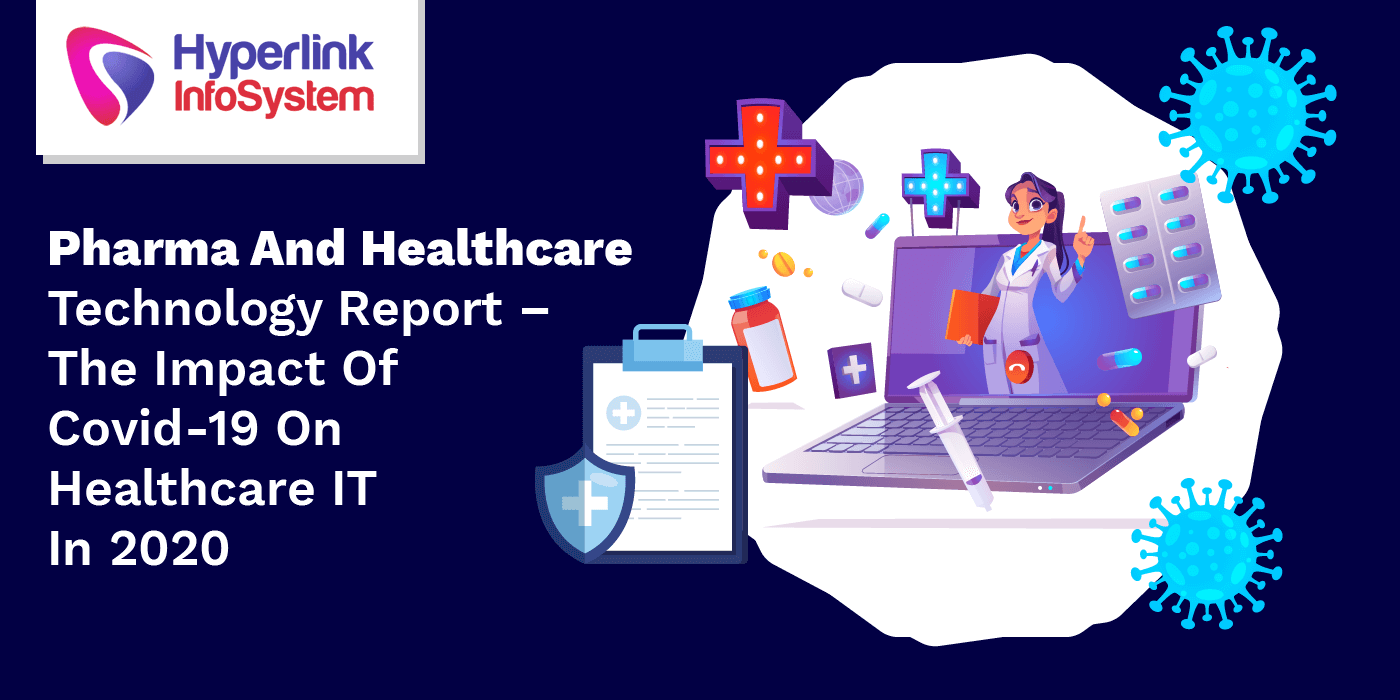
.jpg)
.png)
.jpg)
.jpg)
.png)
.png)

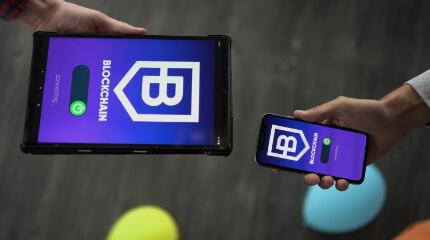

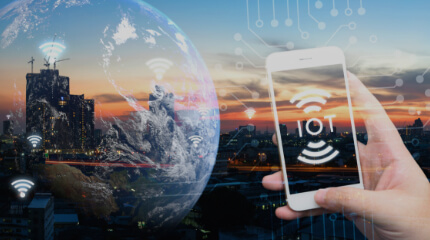














 Next
Next